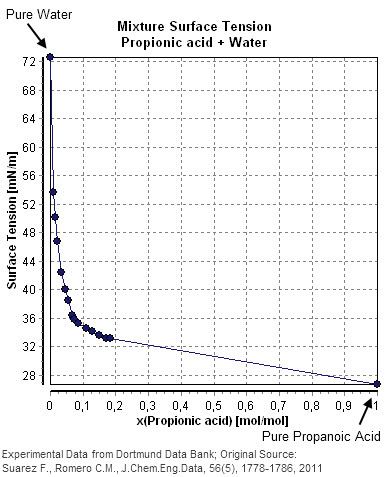 | ||
The Szyskowski Equation has been used by Meissner and Michaels to describe the decrease in surface tension of aqueous solutions of carboxylic acids, alcohols and esters at varying mole fractions. It describes the exponential decrease of the surface tension at low concentrations reasonably but should be used only at concentrations below 1 mole%.
Contents
Equation
with:
The equation can be rearranged to be explicit in a:
This allows the direct calculation of that component specific parameter a from experimental data.
The equation can also be written as:
with:
The surface tension of pure water is dependent on temperature. At room temperature (298 K), it is equal to 71.97 mN/m
Parameters
Meissner and Michaels published the following a constants:
Example
The following table and diagram show experimentally determined surface tensions in the mixture of water and propionic acid.
This example shows a good agreement between the published value a=2.6*10−3 and the calculated value a=2.59*10−3 at the smallest given mole fraction of 0.00861 but at higher concentrations of propionic acid the value of an increases considerably, showing deviations from the predicted value.
